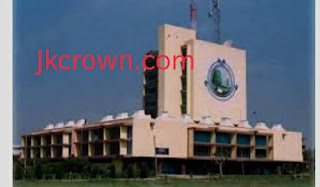3.1 CARBOHYDRATE METABOLISM
Carbohydrates are organic molecules composed of carbon, hydrogen, and oxygen atoms. The family of carbohydrates
includes both simple and complex sugars. Glucose and fructose are examples of simple sugars, and starch, glycogen,
and cellulose are all examples of complex sugars. The complex sugars are also called polysaccharides and are made of
multiple monosaccharide molecules. Polysaccharides serve as energy storage (e.g., starch and glycogen) and as
structural components (e.g., chitin in insects and cellulose in plants).
During digestion, carbohydrates are broken down into simple, soluble sugars that can be transported across the
intestinal wall into the circulatory system to be transported throughout the body. The main function of carbohydrates
is to provide energy in the form of ATP. This production of ATP from carbohydrates or glucose is done in various steps
and cycles Like Glycolysis, krebs cycle and electron transport chain as shown in the diagram below. GLYCOLYSIS
Glycolysis is derived from the Greek words (glykys = sweet and lysis = splitting). It is a universal catabolic
pathway in the living cells. Glycolysis can be defined as the sequence of reactions for the breakdown of Glucose
(6-carbon molecule) to two molecules of pyruvic acid (3-carbon molecule) under aerobic conditions; or lactate under anaerobic conditions along with the production of small amount of energy. This pathway was described
by Embden, Meyerhof and Parnas. Hence, it is also called as Embden-Meyerhof pathway (EM pathway).
Site of Glycolysis
Glycolysis occurs in the cytoplasm of virtually all the cells of the body.
Types of Glycolysis
There are two types of glycolysis.
• Aerobic Glycolysis: It occurs when oxygen is plentiful. Final product is pyruvate along with the production of
Eight ATP molecules.
• Anaerobic Glycolysis: It occurs when oxygen is scarce. Final product is lactate along with the production of
two ATP molecules.
Steps of Glycolysis
Glycolysis is an extramitochondrial pathway and is carried by a group of eleven enzymes. Glucose is converted
to pyruvate in 10 steps by glycolysis. The glycolytic patway can be divided into two phases:
Preparatory Phase :
This phase is also called glucose activation phase. In the preparatory phase of glycolysis, two molecules of ATP
are invested and the hexose chain is cleaved into two triose phosphates. During this, phosphorylation of
glucose and it’s conversion to glyceraldehyde-3-phosphate take place. The steps 1, 2, 3, 4 and 5 together are
called as the preparatory phase.
Carbohydrates are organic molecules composed of carbon, hydrogen, and oxygen atoms. The family of carbohydrates
includes both simple and complex sugars. Glucose and fructose are examples of simple sugars, and starch, glycogen,
and cellulose are all examples of complex sugars. The complex sugars are also called polysaccharides and are made of
multiple monosaccharide molecules. Polysaccharides serve as energy storage (e.g., starch and glycogen) and as
structural components (e.g., chitin in insects and cellulose in plants).
During digestion, carbohydrates are broken down into simple, soluble sugars that can be transported across the
intestinal wall into the circulatory system to be transported throughout the body. The main function of carbohydrates
is to provide energy in the form of ATP. This production of ATP from carbohydrates or glucose is done in various steps
and cycles Like Glycolysis, krebs cycle and electron transport chain as shown in the diagram below. GLYCOLYSIS
Glycolysis is derived from the Greek words (glykys = sweet and lysis = splitting). It is a universal catabolic
pathway in the living cells. Glycolysis can be defined as the sequence of reactions for the breakdown of Glucose
(6-carbon molecule) to two molecules of pyruvic acid (3-carbon molecule) under aerobic conditions; or lactate under anaerobic conditions along with the production of small amount of energy. This pathway was described
by Embden, Meyerhof and Parnas. Hence, it is also called as Embden-Meyerhof pathway (EM pathway).
Site of Glycolysis
Glycolysis occurs in the cytoplasm of virtually all the cells of the body.
Types of Glycolysis
There are two types of glycolysis.
• Aerobic Glycolysis: It occurs when oxygen is plentiful. Final product is pyruvate along with the production of
Eight ATP molecules.
• Anaerobic Glycolysis: It occurs when oxygen is scarce. Final product is lactate along with the production of
two ATP molecules.
Steps of Glycolysis
Glycolysis is an extramitochondrial pathway and is carried by a group of eleven enzymes. Glucose is converted
to pyruvate in 10 steps by glycolysis. The glycolytic patway can be divided into two phases:
Preparatory Phase :
This phase is also called glucose activation phase. In the preparatory phase of glycolysis, two molecules of ATP
are invested and the hexose chain is cleaved into two triose phosphates. During this, phosphorylation of
glucose and it’s conversion to glyceraldehyde-3-phosphate take place. The steps 1, 2, 3, 4 and 5 together are
called as the preparatory phase.


